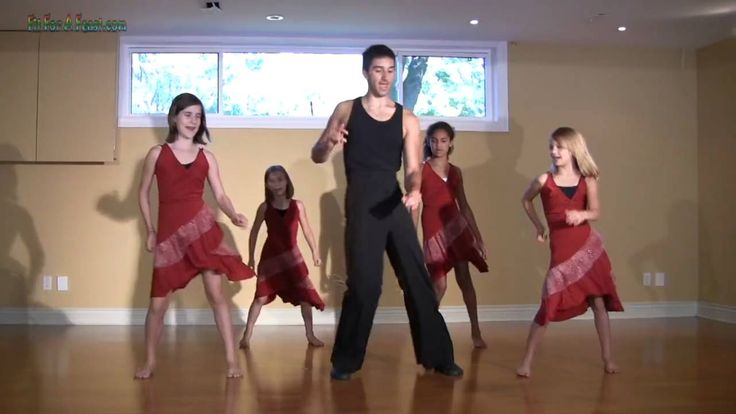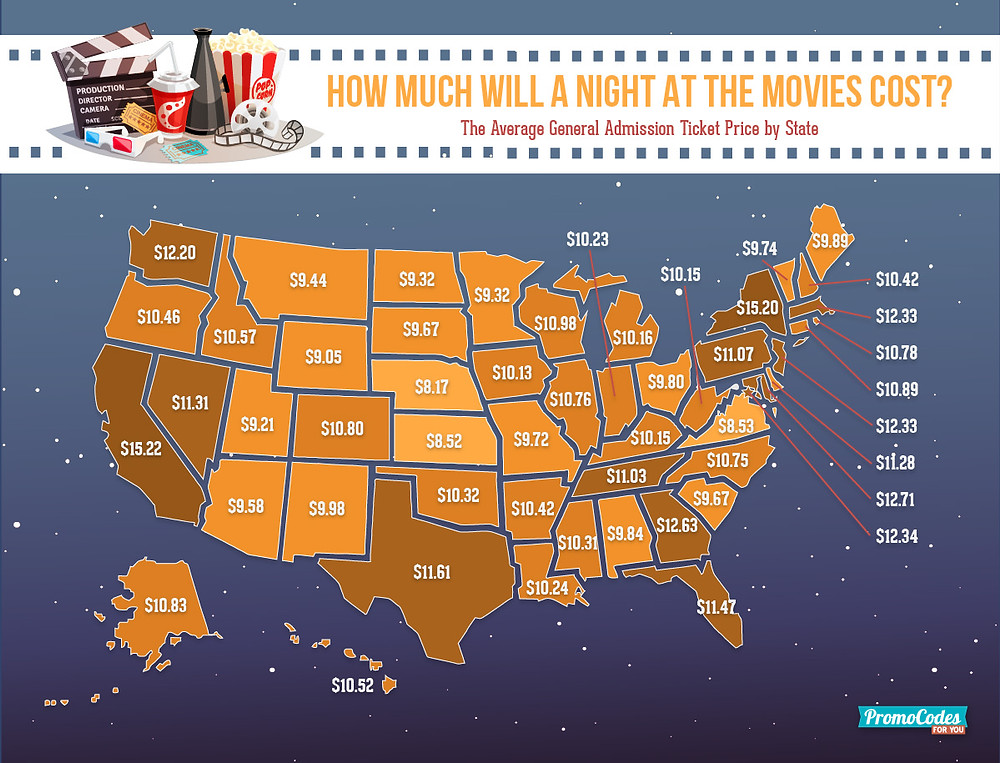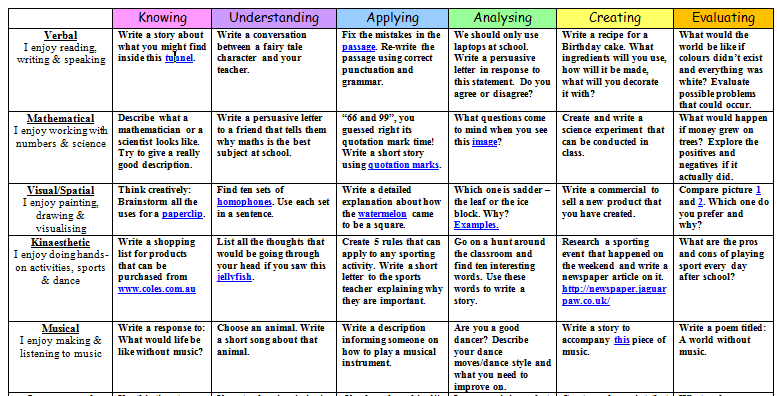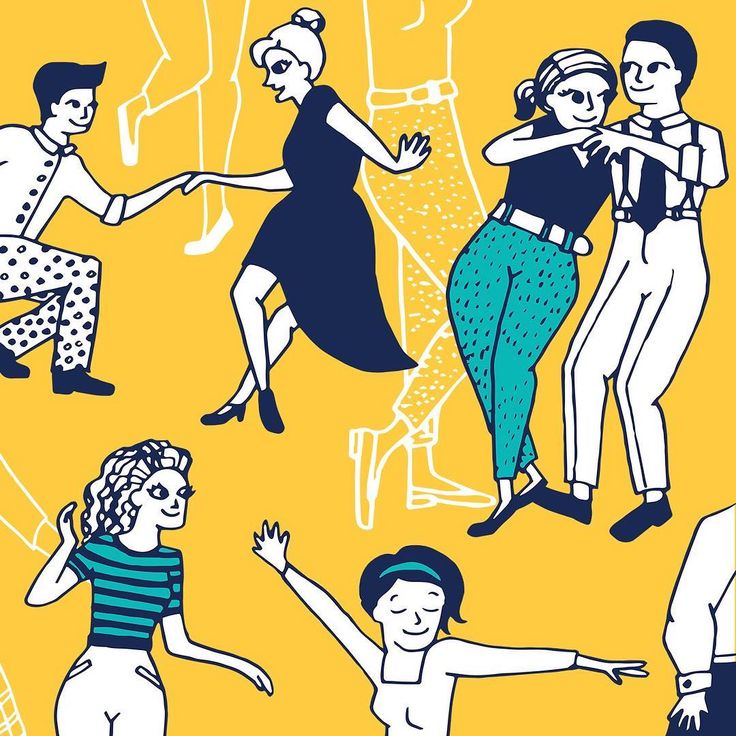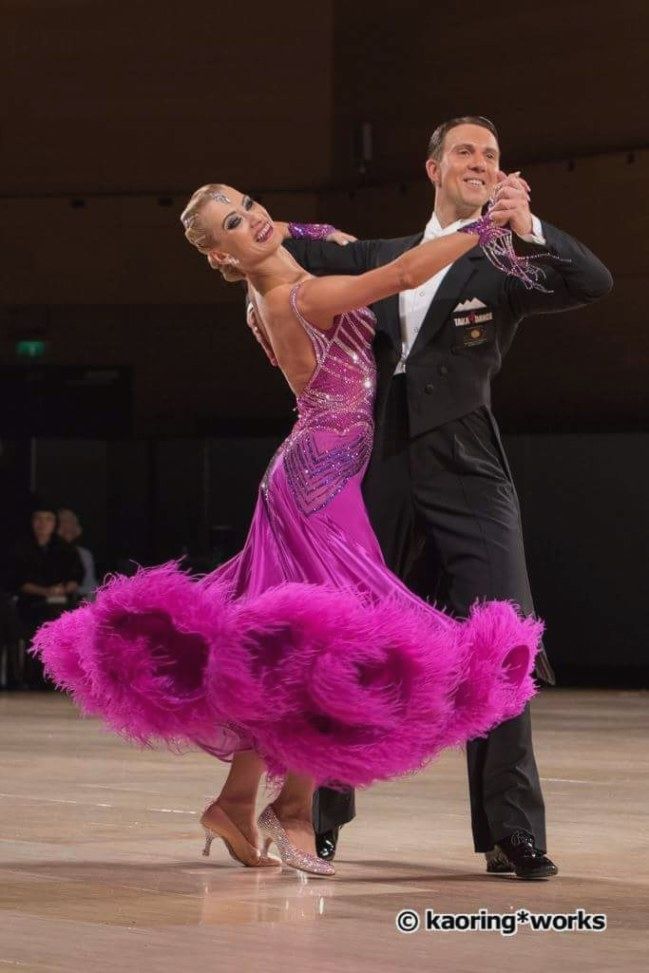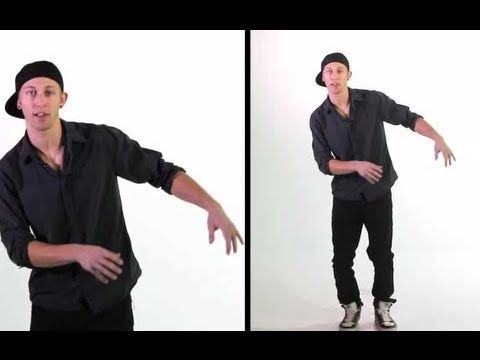How to dance samba for kids
Learn Basic Samba Steps
Samba is a lively dance of Brazilian origin. It's a popular party dance, characterized by simple forward and backward steps and rhythmic hip movements.
- Basic steps
- Instructions & Diagrams
- Video
- Recommended Video Lessons »
Quick intro
Samba is the national dance of Brazil, some say the spirit and soul of the country. In Brazil, it is a solo dance, performed at street festivals and carnivals. Ballroom samba, on the other hand, is a partner dance that has little in common with the original form.
Although in Brazil samba remains a solo form, in other countries it evolved into a partner dance and was standardized as a ballroom dance in 1956. Today it's one of the most common Latin American dances.
Many versions of samba exist - Carnivale, Mesemba, Carioca, Batucado, Conga, just to name a few. Here we'll focus on the ballroom version, quite popular in North America and Europe, with both the younger and older generations.
Basic steps
Ballroom samba is usually danced to music written in 2/4 time, meaning there are two beats in each measure. The basic box step consist of three steps. This means that three steps are performed in two beats of music.
The basic rhythm is 1 & 2, 3 & 4, 5 & 6, 7 & 8, commonly described as "one, uh two", "three, uh four", and so on. Usually you count 8 beats before resuming the count.
The most characteristic element of samba is probably the so called samba bounce, which is achieved through rhythmic bending and straightening of the knees. See the video below for detailed explanation.
Instructions & Diagrams:
Ballroom samba is danced in a closed position, with partners slightly apart. The lady's right hand and the man's left hand are held about the lady's eye level. The man's right hand is placed on the lady's shoulder blade. The lady's left hand is placed flat on the man's back.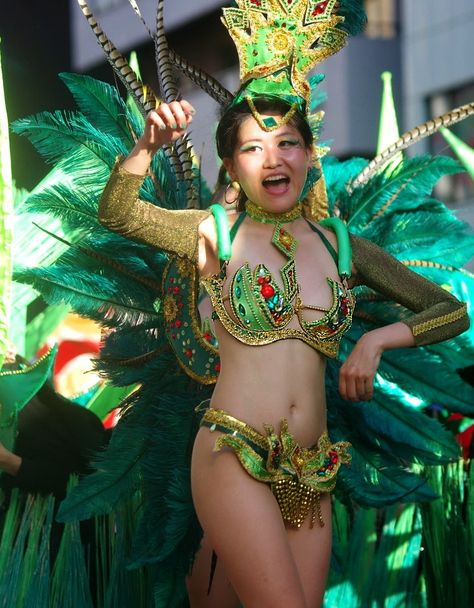
Basic step is a very simple box step. Remember, the rhythm is 1-uh-2, 3-uh-4...
Basic Steps for Men
- Step forward with your left foot (count 1)
- Move your right foot to your left foot (uh)
- Left foot in place, weight shifts to it (count 2)
- Step backward with your right foot (count 3)
- Move your left foot to your right foot (uh)
- Right foot in place, weight shifts to it (count 4)
Basic Steps for Ladies
- Step backward with your right foot (count 1)
- Move your left foot to your right foot (uh)
- Right foot in place, weight shifts to it (count 2)
- Step forward with your left foot (count 3)
- Move your right foot to your left foot (uh)
- Left foot in place, weight shifts to it (count 4)
Video
In this video Leon and Kim will show you the basic steps in addition to a whisk action, which is an extention of the basic movement to the side. You will also learn the principles of bounce action, something that is absolutely crucial to understand:
You will also learn the principles of bounce action, something that is absolutely crucial to understand:
more videos »
If you're interested in more video lessons like this one, take a look at our recommendations »
Samba Facts for Kids
Carnival in Rio de Janeiro
Samba costume for street carnival
Samba is a kind of music, dancing, and singing, originally from Brazil. It began as a music/dance movement in the 1920s.
Contents
- The dance of brazil.
- Origins
- Style
- Traditional Brazilian instruments
- Images for kids
The dance of brazil.
Samba is a lively, rhythmical dance of Brazilian origin in 2/4 time. In ballroom dance there are three steps to every bar, making the samba feel something like a 3/4 timed dance. The timing is one, a-two, with the values about one beat, 1/4 beat, 3/4 beat.
The timing is one, a-two, with the values about one beat, 1/4 beat, 3/4 beat.
There are two main types of samba that differ from each other: the modern ballroom samba, and the traditional samba of Brazil. Traditional Brazilian samba includes the samba which is danced solo at Carnival. In that case, the dancers take just one step on each beat.
Origins
The ballroom samba has its origins in Brazil at the beginning of the 20th century. Many steps can be traced back to the Maxixe danced in 1910s. A book published in France in 1928 already described how to perform the samba. The modern ballroom dance was created in England, mostly with steps adapted from those seen in Brazil. This version is now danced all over the world in international competitive dancing as regulated by the World Dance Council.
Style
Ballroom samba, like other ballroom dances, is a form adapted for its suitability as a partner dance. The dance movements, which do not change depending on the style of samba music being played, borrows some movements from Afro-Brazilian traditional dances such those used in candomblé rituals.
The ballroom samba is danced to music in 2/4 time. The basic movements are counted either 1-2 or 1-a-2, and are danced with a slight bouncing action. This action is created through the bending and straightening of the knees, with bending occurring on the beats of 1 and 2, and the straightening occurring on the "a". Samba is notable for its constantly changing rhythms however, with cross-rhythms being a common feature. Thus, common step values (in beats are):
| 3/4 | 1/4 | 1 | |
| 3/4 | 1/4 | 3/4 | 1/4 |
| 1 | 1/2 | 1/2 | |
| 3/4 | 1/2 | 3/4 |
Traditional Brazilian instruments
The following applies to the type of samba done during street carnivals where the musicians will move along with the dancers, sometimes on foot, sometimes on a motorized 'float' or platform.
The music is played with different instruments – bass drums (a surdo drum, used for keeping a steady beat), snare drums, a whistle (called an apito [a-peet-oh], used for beginning and ending sections of music), other types of untuned percussion, and different varieties of bells.
Other sections are when the apito blasts one rhythm, and all other instruments respond using another rhythm (that lasts the same amount of time as the first), named a call and response section; and a Samba piece can have instrument solos, when one instrument is playing an exciting rhythm. The apito caller signals the end of one section and the beginning of the next by blasting a short call. Pieces always have clear beginnings and ends.
Ballroom sambas are usually played by standard ballroom dance bands with one or two extra percussion instruments.
Images for kids
-
"Batuque" (1835), a painting by the German Johann Moritz Rugendas.
-
Hilário Jovino Ferreira founded the first carnival rancho in Rio.
-
Samba rhythm.
-
The sambista Noel Rosa was the first major figure in samba to bring the genre closer to the Brazilian middle class.
-
Carmen Miranda was the first samba singer to promote the genre internationally.
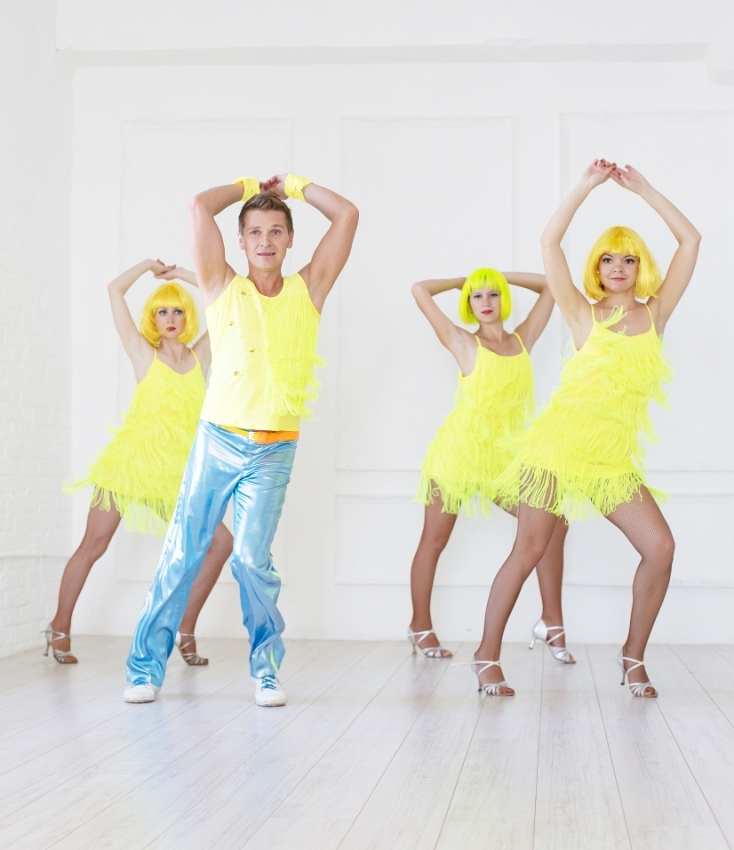
-
Ary Barroso became one of the major composers of samba in the "golden age" of Brazilian music.
-
The sambista Jorge Aragão, who was part of Fundo de Quintal first line-up.
-
The sambista Zeca Pagodinho, one of the main singers of the pagode.
-
Xande de Pilares, a sambista who emerged as the Grupo Revelação singer-songwriter leader.
All content from Kiddle encyclopedia articles (including the article images and facts) can be freely used under Attribution-ShareAlike license, unless stated otherwise. Cite this article:
Samba Facts for Kids. Kiddle Encyclopedia.
Samba (Latin American Dance Program)
Samba Basics
Samba Score 1 a and a 2 (whole, three quarters, quarter whole) . For each count, there is an action of the foot or knee. -Rhythm of samba tou tou Tum - sharp.
Bounce action - occurs with the use of the legs, the center, the lower and middle parts of the back, in the upper back there is compensation + the use of the abdominal muscles to create a boundary of action.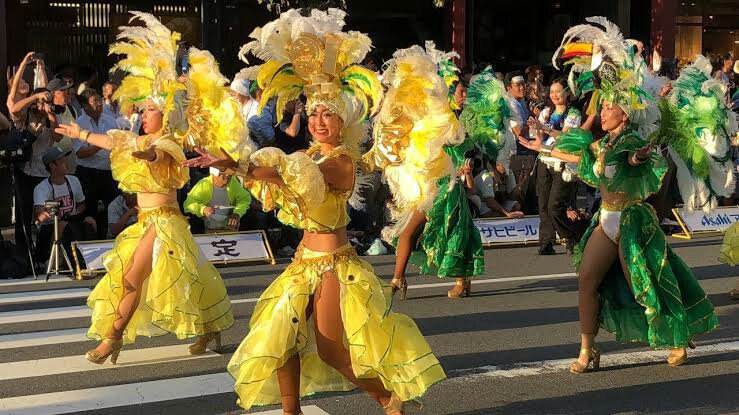 Foot - soft penetrating and pushing action.
Foot - soft penetrating and pushing action.
- Position in a pair: keep the shape and volume - raise your elbows, do not press your hands to the body.
- Fast weight transfer.
The varied rhythmic pattern of samba steps requires separate consideration. The score in the measure of samba is 1i - 2i. Thus, for one measure of music, either two slow steps, or two fast and one slow, or four fast steps can be performed. When performing dance figures that use samba bounce (spring action), a numerical method of counting is adopted. In figures where there is no samba-bounce, the rhythm of fast or slow steps is indicated as "fast" (B) or "slow" (M). Samba steps performed on the count of 1 and 2 involve dividing the two beats of the measure into 3/4 beat (1), 1/4 beat (a) and a whole beat (2).
A characteristic feature of samba is a springy movement or samba bounce (vertical rise and fall) performed by bending and straightening the knee and ankle of the skating leg. Straightening of the knees should be incomplete and performed without tension.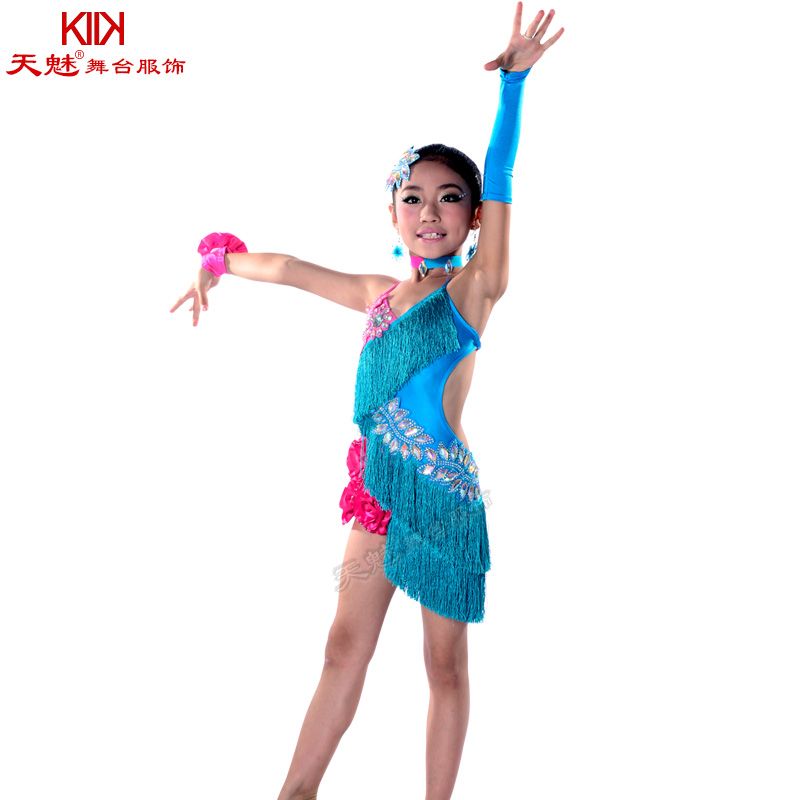 Each rise and fall takes 1/2 beat of a measure of music; for the convenience of learning, an account is adopted. Starting from a bent knee position, the bounce rhythm will be: both 1 and 2, etc. When connecting the rhythm of the bounce with the rhythm of the steps, we get a new rhythm: and 1 and a 2 and so on.
Each rise and fall takes 1/2 beat of a measure of music; for the convenience of learning, an account is adopted. Starting from a bent knee position, the bounce rhythm will be: both 1 and 2, etc. When connecting the rhythm of the bounce with the rhythm of the steps, we get a new rhythm: and 1 and a 2 and so on.
The basis of samba is the sixth position of the legs, which is the starting position for almost all dance figures.
Steps forward are performed from the ball of the foot to the entire foot. Sometimes a step also begins with a heel, then this is separately specified in the description of the figure. Steps back are performed from the toe to the pad and then to the whole foot. Steps to the side are also done from the pads to the entire foot. Throughout the dance, the knees are slightly relaxed, the hips moving more forward and backward, and not side to side, as in cha-cha-cha or rumba. The movements of the hip joint should be soft and well controlled. When stepping forward, the body deviates slightly back, and when stepping back, it leans slightly forward, while the head is, as it were, the base of the pendulum. In samba movements, steps are used with incomplete transfer of body weight: the dancer transfers only part of his body to the supporting leg. A “false prefix” is also performed, when the performer, bringing the free leg to the supporting leg, does not step onto the free leg, but starts the next step from it. Leading the partner is carried out by the partner not only with the right hand, but also with the left, so the partner must keep both hands in tension in order to be ready for a change of direction. The orientation of the position of the couple relative to the hall is important, since samba refers to progressive or dynamic dances, the figures of which are performed with significant advancement. In the description of the figures (in pairs) the direction will be given for the partner.
In samba movements, steps are used with incomplete transfer of body weight: the dancer transfers only part of his body to the supporting leg. A “false prefix” is also performed, when the performer, bringing the free leg to the supporting leg, does not step onto the free leg, but starts the next step from it. Leading the partner is carried out by the partner not only with the right hand, but also with the left, so the partner must keep both hands in tension in order to be ready for a change of direction. The orientation of the position of the couple relative to the hall is important, since samba refers to progressive or dynamic dances, the figures of which are performed with significant advancement. In the description of the figures (in pairs) the direction will be given for the partner.
Backstroke: 3 stages - leg in front with a natural turn of the toe, bending the leg at the knee and building a straight perpendicular line from the toe to the knee, slight tilt of the body forward, bringing the leg back to collect the knees, pushing out from the supporting leg.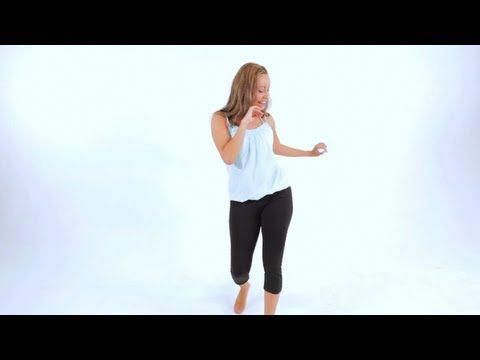 Emphasis on the knee - tends forward and is fixed for a moment. Knee work, repulsion, attack.
Emphasis on the knee - tends forward and is fixed for a moment. Knee work, repulsion, attack.
Samba
Samba is an incendiary Brazilian dance that gained popularity thanks to the famous carnival festivities. African and European rhythms are intertwined in samba, which leave no one indifferent. Adults can also learn this temperamental and sensual dance - do not deny yourself the pleasure of mastering its sensual and temperamental rhythm. Dance lessons can significantly raise self-esteem and have a good effect on well-being.
In our sports and dance club, you can not only enjoy dancing, but also improve your health through well-thought-out workouts. Adult men and women are invited to classes, classes for couples or one at a time are provided.
Why is it better to choose our club for learning samba?
For beginners, samba may not seem particularly easy to master - there are many fast movements that must be performed with precision and confidence. But you should not be afraid - we have skilled and experienced teachers who will make your task easier.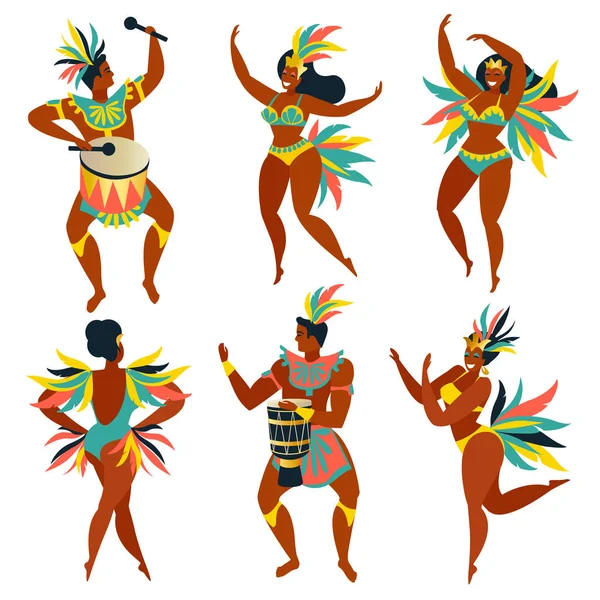 Our trainers will be able to select for you an individual training program, designed for the capabilities of a particular student.
Our trainers will be able to select for you an individual training program, designed for the capabilities of a particular student.
Of course, even with the experience of our teachers, you will have to work hard on yourself, but it will not be difficult and very pleasant! You can choose your own convenient time for classes. If the student is busy on weekdays, he will be able to attend classes on weekends. Our club is open 7 days a week, so you can choose a schedule that suits your schedule.
Samba for beginners is not just a dance. In the classes we try to combine sports, art, and just a lot of fun! Come visit us and enjoy your time!
Samba is a unique harmonious fusion of African and European (particularly Spanish and Portuguese) dance traditions. According to official classifications, she is a pair ballroom dance. If you have a very vague idea of the "point" of the dance, let's explain: here the term means temperamental, even unexpected changes in the positions of partners, the mobility of the lower body and a common rather emotional key. To make it as clear as possible: the movements of samba are the operational transfer of the mass of the body by means of extension and flexion of the knees.
To make it as clear as possible: the movements of samba are the operational transfer of the mass of the body by means of extension and flexion of the knees.
The dance is a symbiosis of completely different cultures in their dynamic manifestation: on the one hand, it contains ritual elements of movements that Africans have performed since ancient times, on the other hand, waltz and polka movements are noticeable. At the same time, some sources indicate that samba comes from Brazil.
For a dance composition, it is permissible to temporarily remove oneself from a partner and perform sufficiently bright elements separately.
What distinguishes samba from many other dances from South America (and the whole world)? Syncopation! They are the transfer of a strong musical beat to a weak one and vice versa. No need to get upset and think that it is difficult, and you may not succeed! Thanks to your own ear and the instructions of an experienced coach, you will very quickly feel the unusual rhythms and will navigate them no worse than a professional dancer or musician.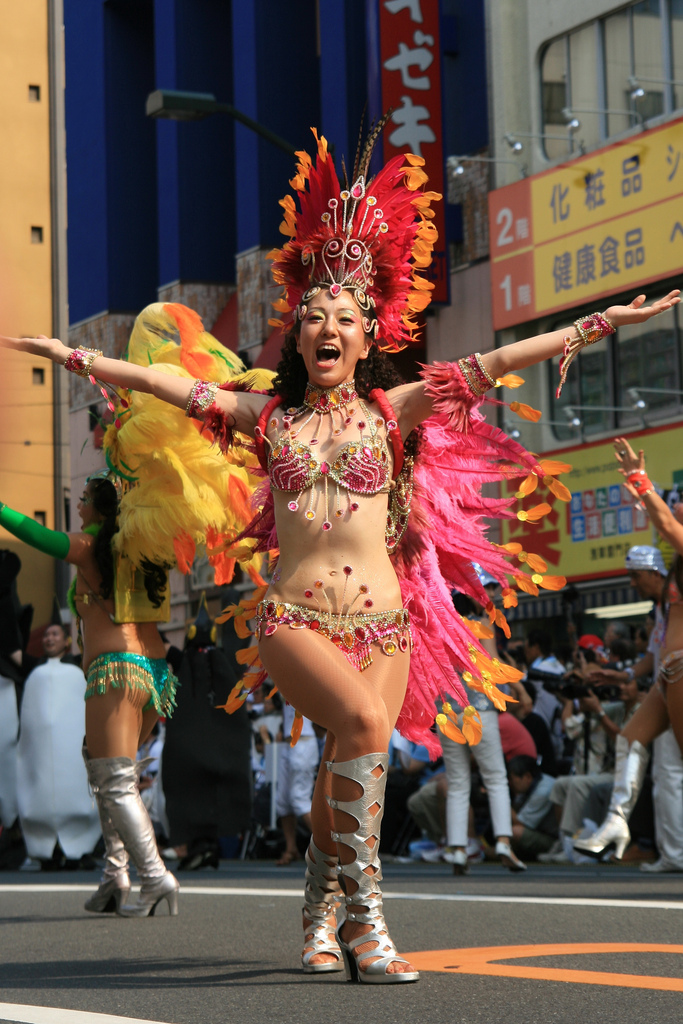
Many different rhythmic patterns are created by a whole set of drums. They form a pleasant melodic sound background, allow you to better navigate the movements and get into the beats. Samba is a mobile dance where movement in a circle is clearly noticeable. Another interesting point: the performance of the elements is characterized by slightly springy movements, organically woven into every step of the dancer.
Thanks to its joyful and perky mood, samba perfectly cheers up and allows you to restore tone and vitality! Dance requires quite powerful energy expenditures: be sure that soon after the start of classes, you will become much slimmer, fitter and more resilient! The silhouette will take on a clear outline! The movements are so physiological, useful and effective that they have long been successfully used in various fitness areas, aerobic programs, rhythmic gymnastics and even figure skating.
In recent decades, dance has taken over the introduction of popular elements: disco style, hip-hop, rock and roll. These "echoes" are organically woven into the general outline, and do not threaten the "classic" samba to lose its originality and individuality. Whether or not to use them is entirely your choice.
These "echoes" are organically woven into the general outline, and do not threaten the "classic" samba to lose its originality and individuality. Whether or not to use them is entirely your choice.
Perhaps, at first glance, the samba movements seem elementary and easy: they really become so, but over time, after long training. Having learned at least a minimum of basic movements, you can impress those present at any event, become the center of attention, increased interest and admiration.
Despite the fact that in Russia the most famous dynamic version of the dance, there are quite calm lyrical versions. Samba is a whole philosophy, like life, it has many faces and is sometimes unpredictable.
Samba is able to bewitch with its beauty and naturalness: you want to look at it, like fire and water, without stopping. Samba is a special spirit, mood, manifestation of love for life. It releases motor potential, and not only strengthens the muscular corset, but teaches you to unconditionally control your own body, to be open and bright.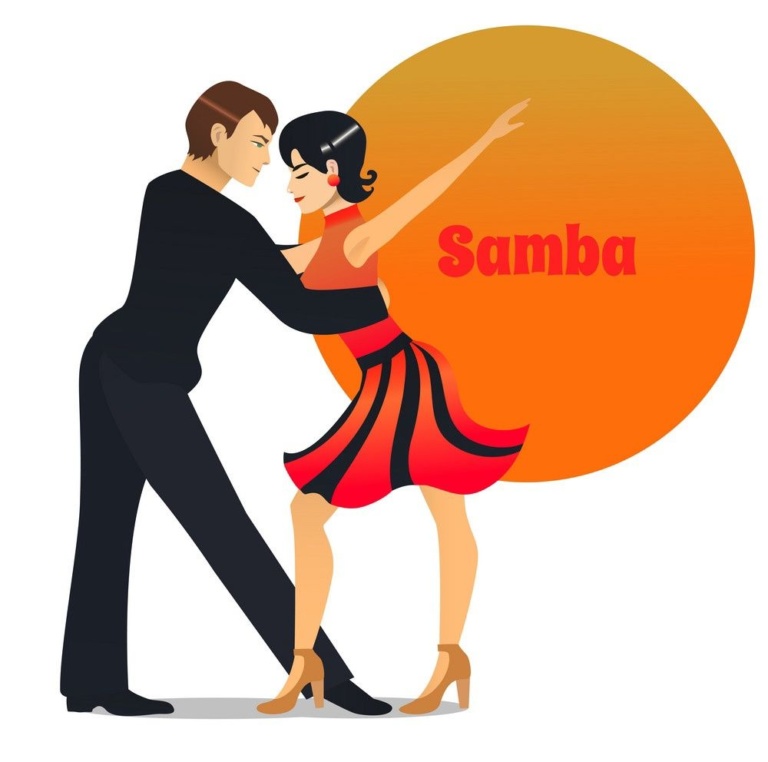
Samba. What are the benefits of dancing?
Almost everyone wants to learn to dance, but this desire remains a dream for many. The constant lack of time, fatigue and fatigue at work - all this becomes the excuse that "amuses" the soul. If you also do not dare to start classes because of the search for permanent reasons, or the fear of not coping with difficult training, come to our dance and sports club "Insight". Having attended the first lesson, you will surely be able to "find" free time and make sure that with our teachers samba turns into a real pleasure, filled with passion, fire and energy.
Samba dance lessons provide an incredible amount of benefits. With regular classes you will:
— feel your sexuality and confidence;
- you will be able to demonstrate to others a beautiful posture and elegance of the body. During classes, the correct posture is formed, and the body becomes flexible and most attractive. In samba, the back should always be kept straight, so you will get rid of stoop and give a good load to the spine, keeping it in good shape;
- strengthen the heart system.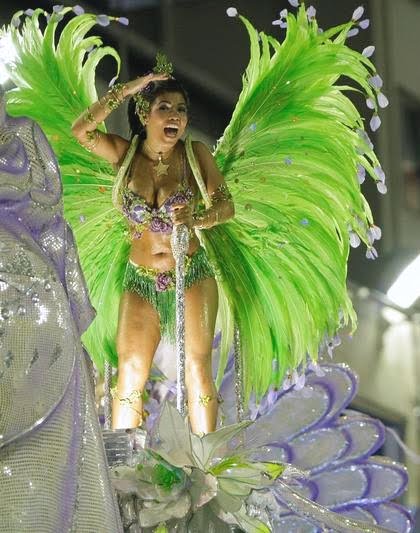 Thanks to dance loads, blood circulation processes are improved, which is reflected in the state of blood vessels and the heart. The brain also benefits, because improved blood supply is also important for this organ;
Thanks to dance loads, blood circulation processes are improved, which is reflected in the state of blood vessels and the heart. The brain also benefits, because improved blood supply is also important for this organ;
- get rid of excess weight. By signing up for our classes, you will forget about hanging sides, flabby buttocks, hips and hated extra pounds. Samba dance lessons involve a significant load, thanks to which the dancer will become fit, slender, flexible and healthy.
What is the basis of samba?
Samba dance for beginners is a great opportunity for everyone to learn. With our teachers, who explain everything in detail and clearly demonstrate each movement, every student will be able to learn how to move beautifully and correctly.
The samba dance has several important features. The main thing in it is the legs, which should be in the sixth position at the beginning. Absolute beginners do not even suspect what is at stake, but it's not scary.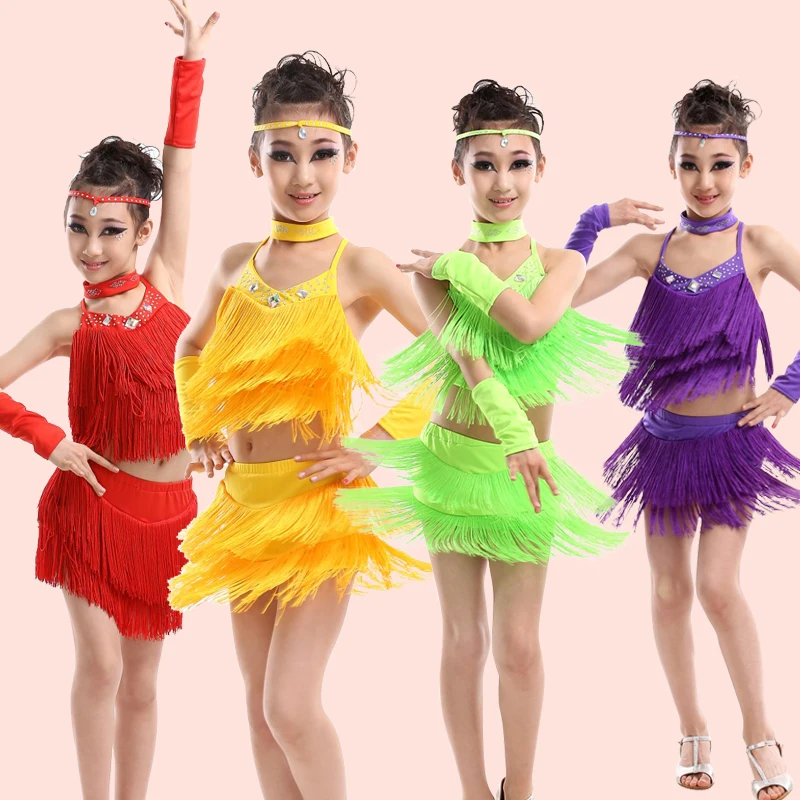 All information will be given by experienced specialists in a dosed manner, and you will definitely learn the subtleties of seductive movements.
All information will be given by experienced specialists in a dosed manner, and you will definitely learn the subtleties of seductive movements.
The basis of samba are:
— rhythm;
- springy movements of the legs, as well as the hips;
- energy.
For the correct execution of springy movements, it is enough to follow a simple rule - to start movements with the supporting leg, bending and then extending the ankle and knee.
At the initial stage in our dance and sports club, the basic elements of dance are carefully practiced. Teachers monitor the correct execution of movements, positions and posture of students, thanks to which the lessons are effective, charging students for further success and harder work.
The samba dance is very dynamic, energetic and full of drive. But this does not mean that learning begins at a fast pace. Our teachers have extensive experience working with beginners of different age categories, so they will definitely teach you how to move in accordance with all the rules of samba.